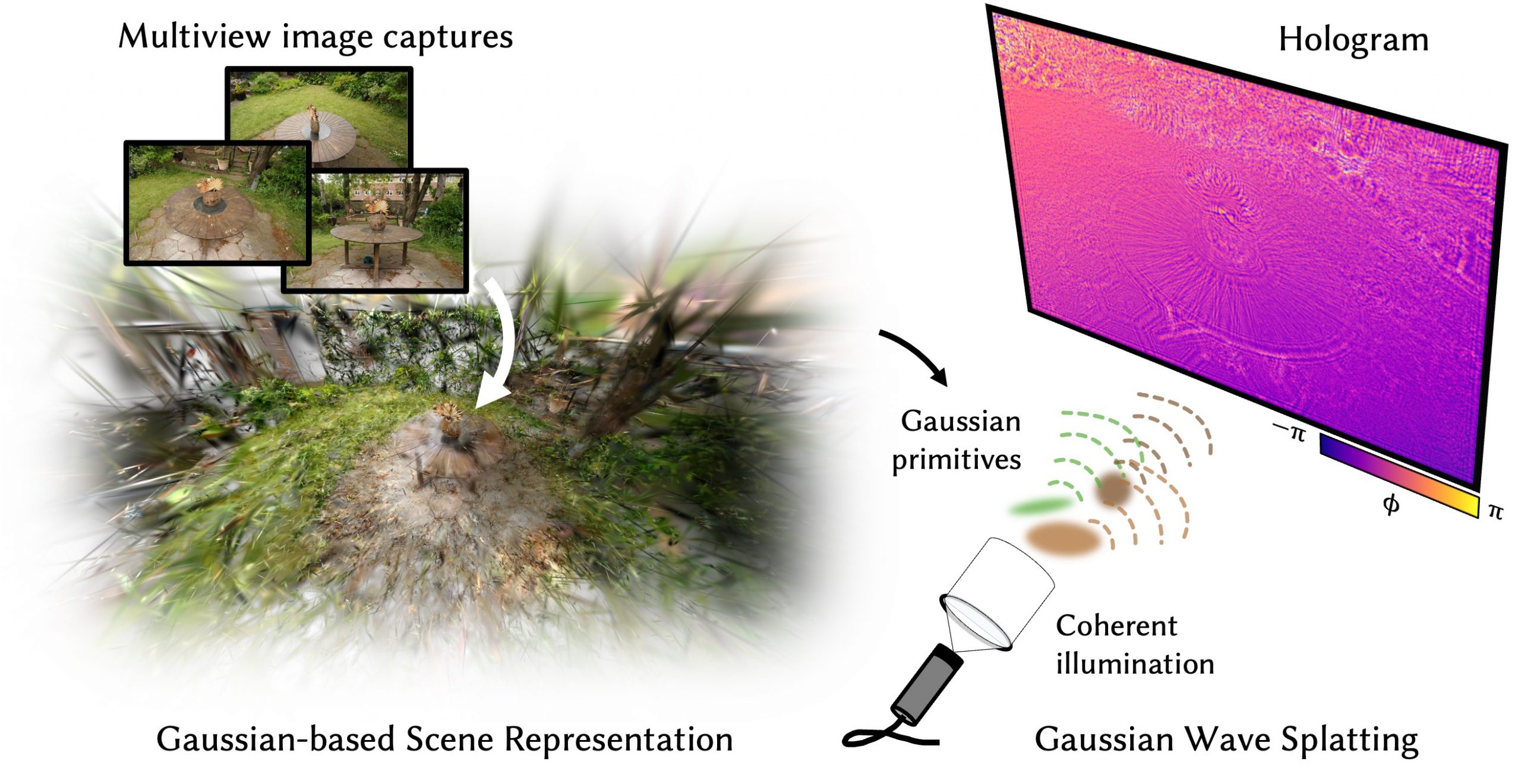ABSTRACT
State-of-the-art neural rendering methods optimize Gaussian scene representations from a few photographs for novel-view synthesis. Building on these representations, we develop an efficient algorithm, dubbed Gaussian Wave Splatting, to turn these Gaussians into holograms. Unlike existing computer-generated holography (CGH) algorithms, Gaussian Wave Splatting supports accurate occlusions and view-dependent effects for photorealistic scenes by leveraging recent advances in neural rendering. Specifically, we derive a closed-form solution for a 2D Gaussian-to-hologram transform that supports occlusions and alpha blending. Inspired by classic computer graphics techniques, we also derive an efficient approximation of the aforementioned process in the Fourier domain that is easily parallelizable and implement it using custom CUDA kernels. By integrating emerging neural rendering pipelines with holographic display technology, our Gaussian-based CGH framework paves the way for next-generation holographic displays.

